Share this @internewscast.com
Dealing with chronic pain can make many daily tasks challenging. While every chronic pain experience is unique, and there’s no one-size-fits-all approach to alleviating pain, adding the right kind of movement to your day can help. We spoke with Sean Steerforth, master flexologist for StretchLab, who shares 10 of the best fitness tips to manage chronic pain.
“Keep moving! However, choose low-impact, joint-friendly activities such as swimming, cycling, walking, and yoga,” Steerforth stresses. “If you are someone who wants to exercise with weights, use light weights. This can help strengthen muscles around the joints, providing support and stability while minimizing stress on the joints themselves. Incorporate assisted stretching.”
Keep in mind that it’s essential to check in with a healthcare professional before starting any new exercise program—especially if you’re dealing with chronic pain. Working with a certified personal trainer who helps you with flexibility and mobility can decrease your risk of injury and ease the pain so that you’re able to keep exercise as part of your regular routine. Always stay in tune with your body and “find a way to work around your limitations,” Steerforth adds.
Keep reading to learn all about the 10 best expert fitness tips to manage chronic pain. And when you’re finished, be sure to check out these 10 Strength Training ‘Rules’ to Follow for the Best Results.
Stretch and strengthen your body.
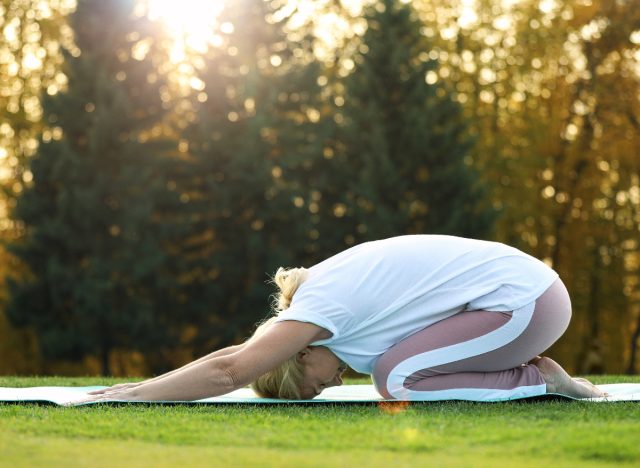

Strengthening and stretching your body are beneficial on their own, but when combined, Steerforth says they can be a total “game-changer” for those who need to manage chronic pain.
“Let’s use the example of chronic lower back pain, which is very common in a lot of people,” Steerforth says. “Stretching your lower back can help relieve tight muscles. Strengthening your core can help provide stability and support to the spine. When your core muscles are weak, it can lead to poor posture, decreased spinal stability, and increased stress on the lower back, contributing to pain and discomfort. Both techniques combined can lead to overall better stability and support, helping with chronic pain.”
Reap the benefits of heat therapy.


Whether you choose to take a hot bath, do a sauna session, or use a heat pack, heat therapy can be an incredibly effective method to soothe chronic pain.
“When you apply heat to a painful area it dilates blood vessels, allowing more oxygen and nutrients to reach the tissues,” explains Steerforth. “This increased blood flow can help to speed up the healing process.”
Emphasize proper recovery.


Recovery is a crucial part of the process for those with chronic pain.
“Recovery is designed to help prevent injuries, but if someone is already dealing with a chronic injury, recovery can also help relieve it,” says Steerforth. “Recovery includes utilizing recovery techniques, making sure to take recovery days throughout the week, prioritizing stretching, and time for your body to rest.”
Have the right recovery tools at your fingertips.
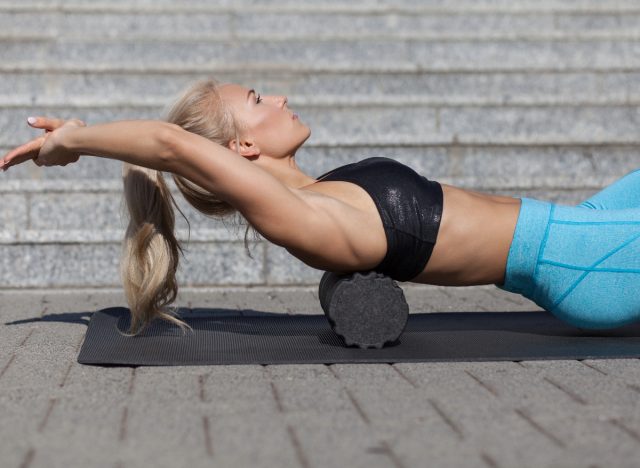

Having the right recovery tools at your fingertips and easily accessible can make all the difference in the world. There are plenty to choose from, including massage balls, foam rollers, stretch bands, and percussion massagers.
“Regular use of recovery tools can help prevent and treat chronic injuries by maintaining flexibility, reducing muscle imbalances, and improving overall tissue health,” Steerforth points out.
Opt for assisted stretching over static stretching.
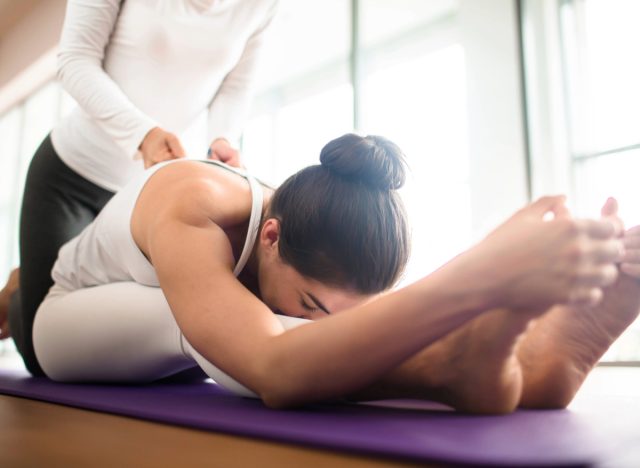

Assisted stretching reigns supreme for a few reasons. Steerforth notes that assisted stretching allows you to get a deeper stretch than static stretching does. It’s also customizable, so a personal trainer can ensure your assisted stretching sessions best suit your needs and take any limitations into account.
In addition, assisted stretching calls for something known as “passive stretching.” Steerforth explains, “This passive approach allows for greater relaxation of the muscles being stretched, which can be beneficial for individuals experiencing chronic pain and tension.”
Cross-train.


Chronic injuries and pain are often the result of consistent stress placed on certain joints or muscles. That’s where cross-training can come in clutch.
“Cross-training is alternating between different types of exercises,” says Steerforth. “This type of training can help reduce symptoms of chronic injuries and provide variety in your fitness routine.”
Warm up and cool down.


Warming up before workouts, along with cooling down after you finish, should not be ignored. They’re key parts of the overall process.
“For example, if someone is dealing with chronic low back pain, a dynamic warm-up consisting of dynamic lower back stretches is best because it helps activate the muscles that will be used during exercise, therefore priming them for activity,” explains Steerforth. “A proper cool-down routine for someone with chronic lower back pain should consist of static stretches for the lower back. Performing static stretches after a workout prevents muscles from becoming overly tight or stiff.”
Be consistent.
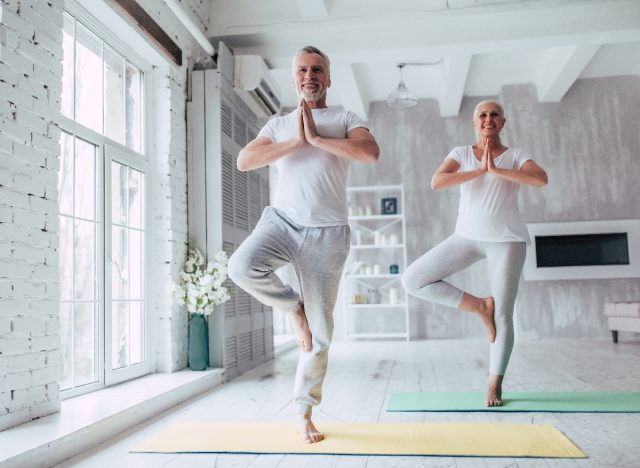

Being consistent with your efforts is crucial no matter your goal. For instance, sticking with a solid recovery routine will boost the benefits that come with managing chronic pain. “Consistency is essential for making progress and regaining optimal function,” Steerforth adds.
Tweak the duration and intensity of your workout.
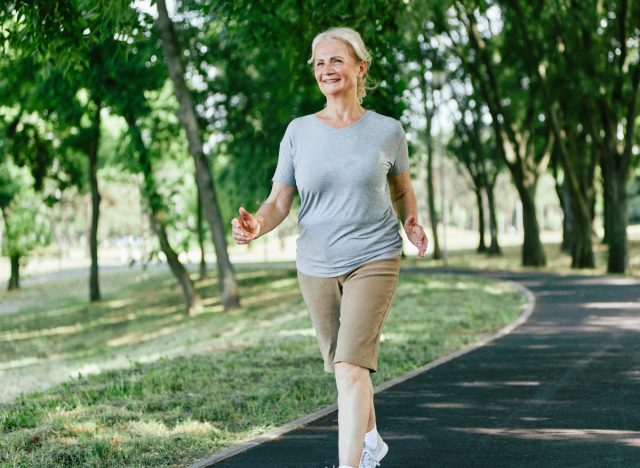

Whenever you’re dealing with pain, some days will always be better than others. That’s why it’s important to listen to your body, and adjust your workouts and stretching routine accordingly.
“Modifying the intensity and duration of a workout or a stretch routine is a good idea because the pain may be worse on some days,” Steerforth notes. “Listen to your body, and don’t do anything that might make the pain worse.”
Maintain proper form.
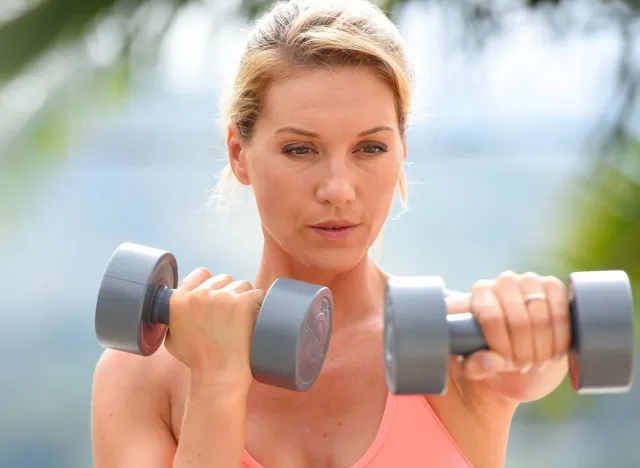

Last but not least, always be mindful of your form. Using the correct form when exercising can decrease your chances of worsening an existing injury or leading to new ones.
“It can also minimize pain and discomfort and can make exercises or activities more tolerable and conducive to managing chronic pain,” Steerforth notes. “Activating the proper muscles maximizes the effectiveness of the movement which can help manage chronic pain in the long-term.”





